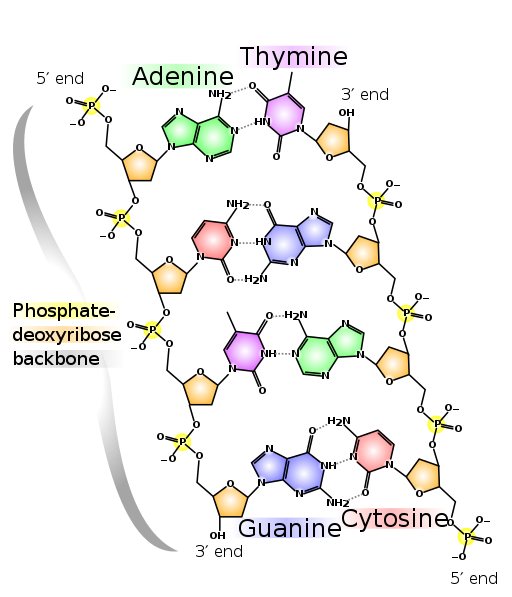Pre-Lab
- What are fruits?
- Where do they come from?
- What are they made of?
- Use phylogeny to classify plants (DKPCOFGS)
- Where is DNA located within the fruits? Where is it located in you?
- Why would you want to extract DNA from an organism?
- What class of molecule is DNA?
Introduction: NUCLEIC ACIDS

DNA and RNA are nucleic acids and make up the genetic instructions of an organism. Their monomers are called nucleotides, which are made up of individual subunits. Nucleotides consist of a 5-Carbon sugar (a pentose), a charged phosphate and a nitrogenous base (Adenine, Guanine, Thymine, Cytosine or Uracil). Each carbon of the pentose has a position designation from 1 through 5. One major difference between DNA and RNA is that DNA contains deoxyribose, and RNA contains ribose. The discriminating feature between these pentoses is at the 2′ position where a hydroxyl group in ribose is substituted with a hydrogen.


DNA is a double helical molecule. Two anti-parallel strands are bound together by hydrogen bonds. Adenine forms 2 H-bonds with Thymine. Guanine forms 3 H-bonds with Cytosine. This AT & GC matching is referred to as complementarity. While the nitrogenous bases are found on the interior of the double helix (like rungs on a ladder), the repeating backbone of pentose sugar and phosphate form the backbone of the molecule. Notice that phosphate has a negative charge. This makes DNA and RNA, overall negatively charged.
DNA can be identified chemically with the Dische diphenylamine test. Acidic conditions convert deoxyribose to a molecule that binds with diphenylamine to form a blue complex. The intensity of the blue color is proportional to the concentration of DNA. The Dische’s Test will detect the deoxyribose of DNA and will not interact with the ribose in RNA. The amount of blue corresponds to the amount of DNA in solution.


